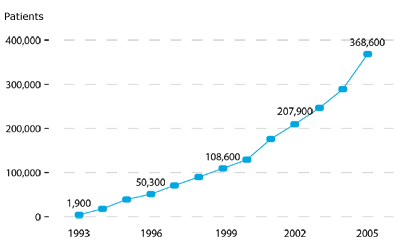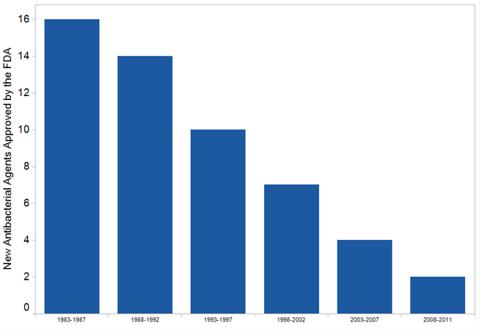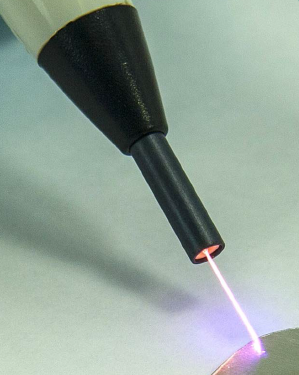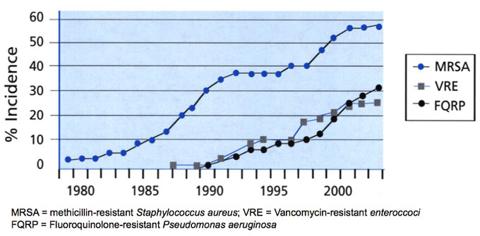The J-Plasma surgical technology from Bovie Medical Corporation (BVX) has recently begun to hit the market. Although it is anticipated sales will start out slowly due to the time involved in building and deploying a sales force specific to J-Plasma and in hospital capital equipment purchasing decisions, revenues from J-Plasma are expected to become very strong in 2014, leading to a correspondingly large upward move in the share price.
Although J-Plasma addresses a $2 billion market, of equal or greater importance is the question of how it stacks up against the competition. The author's previous article referenced above includes a section that discusses what J-Plasma is and describes its advantages over existing surgical technologies.
This article will examine some additional possible strengths and applications beyond those mentioned in the previous article. Although this might initially seem like a discussion of a technology rather than of an investment opportunity, these points are actually very pertinent to J-Plasma's probable market penetration, span of applications, and potential for long-term sustained revenue growth.
J-Plasma May Prevent and Treat MRSA
J-Plasma looks like a miniature version of Luke Skywalker's light-saber. Or if The Lord of the Rings is your preference, it is perhaps reminiscent of Sting, Frodo's sword that glowed blue when the bad guys (orcs) were around. It's an appropriate appearance for something that could prove to a valuable weapon in the battle against an army of mass murders.
The MRSA (methicillin-resistant Staphylococcus aureus) bacterium is one of the great scourges of modern medicine. When you hear of someone going into the hospital and becoming seriously ill or dying of an infection that had nothing to do with the reason they were admitted in the first place (often euphemistically called "complications from surgery"), odds are the culprit was MRSA. MRSA kills at least 20,000 people per year in the US and perhaps as m! any as 100,000 (among other factors, hospitals usually don't like to acknowledge how prevalent the disease is at their facilities). The annual economic cost of hospital-acquired infections is perhaps as high as $45 billion. The figure below shows the stupendous rise of MRSA between 1993 and the mid-2000s. Nor did it stop there - the rate of MRSA infections has doubled in the past five years.

At the same time as MRSA rates have risen, fewer and fewer new antibiotics have entered the market, as seen below. This is a serious problem because until now the primary approach to finding new MRSA treatments has been the development of new antibiotics to which MRSA may be susceptible.
(click to enlarge)
One of the very interesting features of J-Plasma is that it may be very effective at preventing and perhaps at treating MRSA.
A picture of a J-Plasma handpiece is shown below. Looking at the light given off by the plasma, one can see in addition to the dominant white core of the beam a distinct purple-violet hue that is also present. When one sees this purple-violet hue, it is often the result of a light emission spectrum that extends down into the UV (ultraviolet) range.

Bovie's own Greg Konesky has explained some of the implications on his website. (Note: As this article goes to press, Mr. Konesky's website, kplasma.com, is experiencing technical difficulties. The following articles are normally available there and have been temporarily uploaded to Slideshare until the technical difficulties are resolved.) In a white paper he wrote, he had this to say:
The ability of atmospheric discharge cold plasmas to sterilize surfaces is well established. The combination of electron and ion bombard! ment, the! rmal effects, free radical production, and local exposure to UV all act in concert to disrupt bacteria cell membranes, denature proteins, and damage bacterial DNA. The cell walls of bacteria can also be disrupted by electrostatic effects induced by charged particle bombardment.
In an IEEE Conference paper from 2008 (available as a reprint on his website), he provided additional details:
The plasma jet configuration has many advantages over previous cold plasma applicators. Now there are two independently controllable variables, electrical power input and gas flow rate, that give the plasma jet a wide range of effect. For example, a low electrical power input and a high gas flow rate produces a very gentle cool beam, ideal for surface sterilization without injury to tissue.
Helium, argon, or a mixture of both is the carrier gas generally used. Helium is preferred because its high thermal conductivity helps carry away heat, and its rich UV spectral components enhance its sterilization capability [20]. It is also easier to ionize at a lower voltage [21] than argon (at atmospheric pressure), despite helium having a higher ionization potential [22]. A typical plasma jet may consume between 0.5 and 5 liters per minute, making the choice of any of the other of the noble gases prohibitively expensive.
… Fridman, et al. [16] demonstrate "complete sterilization of skin flora" on a cadaver after 6 seconds of treatment with a 1 Watt/cm2 plasma density.
In a study published last year, T. Maisch et al investigated the ability of cold-atmospheric plasma to destroy colonies of MRSA, S. aureus and E. Coli present on skin. They described their results as follows:
In this study we demonstrated for the first time, that cold atmospheric plasma achieved a killing efficacy of up to 99.999% against topically applied bacteria, inclusively MRSA, via a contactless procedure without damaging the surrounding tissue.
Not only is Bovie most certainly aware of the anti-MRSA po! ssibiliti! es of J-Plasma, the company has quietly indicated its desire to explore them. Page 33 of a presentation on the company's website includes the following:
Anti-microbial (bacterial and viral eradication) Direct treatment: dermal infections, MRSA, ulcerationsPrevention: wound closure, open surgical sites
What this means is that J-Plasma can likely do the following:
Automatically sterilize surgical incisions as part of its method of operation, acting to prevent MRSA infections that occur as an accidental side effect of surgery ("complications from surgery").Kill invading MRSA bacteria when using its coagulation function (in essence "welding" torn tissue together) to close open wounds (e.g., from accidents).In addition to preventing infection, actually treat existing MRSA infections in at least some circumstances.Other Antibiotic-Resistant Bacteria
The attentive reader may have noticed that cold plasmas have an ability to destroy bacteria in general, not just MRSA. If J-Plasma is proven to have the ability to effectively combat MRSA, it would also be expected to be efficacious against other antibiotic-resistant bacteria (and vice versa). The graph below shows the rise of two other antibiotic-resistant bacteria in addition to MRSA.
(click to enlarge)
Antibiotic-resistant bacteria, already a source of terrible human suffering, will only inflict an increasingly greater toll unless effective methods for preventing and treating them are found.
Although a few strains of UV-resistant bacteria have been found in areas with exceptionally high natural UV levels (e.g., the upper atmosphere), so far as anyone knows, the types of bacteria that cause illness in humans do not (and likely cannot) become resistant to UV. This is important for several reasons, including (from a purely business standpoint) that an anti-bacterial J-Plasma treatment should be remain effec! tive inde! finitely..
Preferential Annihilation of Cancer Cells
J-Plasma also holds considerable promise in surgical cancer treatment. Bovie has known about this possibility for quite some (e.g., as evidenced by mention of oncology in past press releases). The recent March 25, 2013 press release from Bovie had this to say:
J-Plasma™ continues to receive great support from influential surgeons across the country, further bolstering the positive results already achieved. While the Company is energetically pursuing the field of gynecological surgery, it anticipates entries into specialties such as oncology, dermatology, ENT and others, prompted by positive surgeon reactions in those specialties.
Again the white paper by Bovie's Greg Konesky explains one of the methods by which J-Plasma may be useful for cancer treatment:
The plasma jet configuration has many advantages over previous cold plasma applicators. Now there are two independently controllable variables, electrical power input and gas flow rate, that give the plasma jet a wide range of effect. For example, a low electrical power input and a high gas flow rate produces a very gentle cool beam, ideal for surface sterilization without injury to tissue. Conversely, a high electrical power input, and low gas flow rate forms a very intense beam useful in removing tumors, for example. In addition, the flowing gas from the plasma jet helps clear the application area of debris.
As discussed in the author's last article on Bovie, the plasma stream from the J-Plasma device preferentially destroys diseased cells rather than normal cells due to the differences between the two in physical and chemical properties. This clearly has substantial value both in surgical removal of cancerous tumors and in erosive destruction that cannot be directly excised.
Plasma Isn't New - What's So Special About J-Plasma?
Although it is true that both plasma and research into plasma-based medicine have been around for awhile, there have be! en some fu! ndamental difficulties in translating promising lab results into actual useful devices. For example, plasmas have often had to be created under low pressure conditions (as opposed to normal air pressure). While their potential efficacy in treatment can be shown under such conditions, there is a lack of a practical way to use them. As another example, argon plasmas have shown promise but tend to be hot and suffer from a flame thrower effect, often producing burns in adjacent healthy tissue as a side effect.
As a low-temperature atmospheric pressure helium plasma with independently tunable power levels and gas flow rates, J-Plasma solves the problems associated with other plasma-based medical treatments. Atmospheric pressure means it can be used in ordinary conditions, not just in a chamber at a low pressure that cannot be tolerated by human beings. Its low-temperature combined with helium's excellent heat transfer properties mean that collateral thermal damage to adjacent healthy tissue is minimal. Independently tunable power and gas flow enable J-Plasma to be used for a range of applications, such as delicate tissue excision, rapid surgical cutting, and soft tissue coagulation.
What to Expect Next and Investment Implications
Bovie Medical has demonstrated its awareness that J-Plasma may have considerable value in preventing and treating antibiotic-resistant bacterial infections such as MRSA and in oncology (cancer treatment). Several different events could follow. For example, the company could announce that they are in clinical trials for MRSA treatment via J-Plasma. Another possibility is that an article could appear in a medical journal demonstrating that J-Plasma surgical patients develop MRSA and other infections at a much lower rate than those treated using standard surgical methods. Cancer treatment is also a possibility for a first release of news. As there are no guarantees as to the particular topic or method of communication method by which we will first hear of very specifi! c efforts! by Bovie in these areas, we will just have to wait and see what happens.
In the author's last article, the case was made that based on Bovie's announced sales force expansion and what this implies in terms of management's expectations for revenue growth between now and sometime in 2014, the share price may reach $22 in 2014. This figure assumes that sales meet management expectations and is based on average industry price-to-sales ratios. The case is also made that $30 is entirely possible due to investors assigning a premium to the company valuation based on rapid growth, strong intellectual property protection, and highly innovative, market disruptive technology.
If J-Plasma is shown to be clinically effective against antibiotic-resistant bacteria and/or produce better outcomes in cancer surgery, it could have several implications from a market and financial perspective:
J-Plasma should become an easier "sell" to hospitals, surgical centers, and others, resulting in revenues rising more quickly than anticipated.Bovie's planned moves into additional surgical markets besides the initial targets in OB-GYN would likely accelerate, also enhancing revenue growth over the next few years.Bovie's prospects for consistent long-term growth and market strength would further improve.If these events were to occur, we could also expect even better share price performance than that indicated by our previous analysis of the revenue boost from J-Plasma. Bovie's prospects for consistently and substantially outperforming the broad market over the longer term would also be very positively impacted. Finally, Bovie would become even more attractive to larger medical device companies as a potential takeover target.
The same cautions listed in my previous article still apply.
The author would like to thank Mr. Mike Bolser, a shareholder and dedicated BVX researcher, with whom the author has had a number of informative and helpful conversations.
Disclosure: I am long BVX. I wrote this article myself, and it expresses my own opinions. I am not receiving compensation for it. I have no business relationship with any company whose stock is mentioned in this article. (More...)
No comments:
Post a Comment